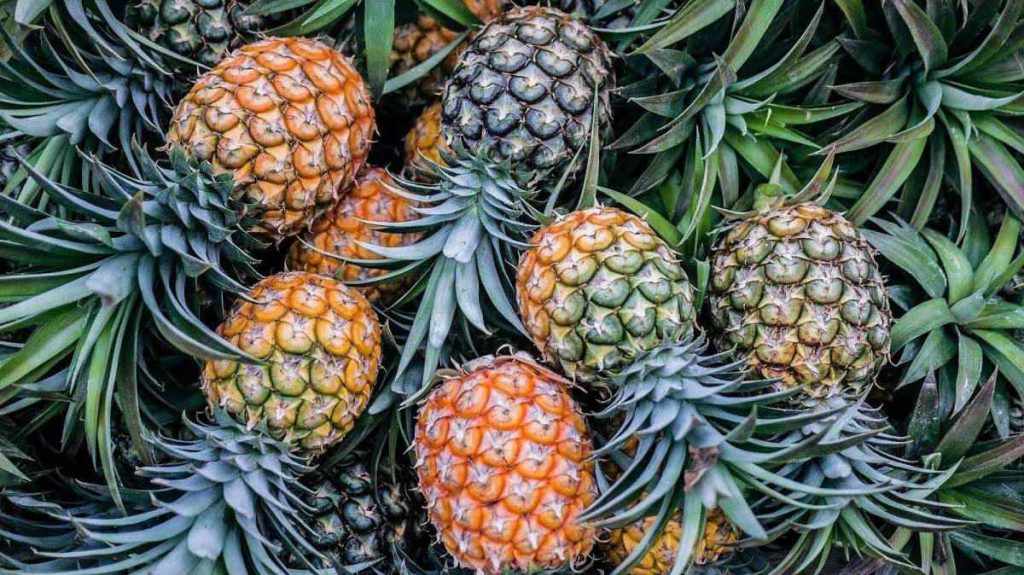
It’s easy to get buried in all the sustainable fabrics these days (just like that favorite tee you can never find).
And so much of this innovation is just, well…strange. Fabrics made from apples and pineapples? What?!
All in all, there are new words to define, different processes to understand, various certification schemes to become familiar with, and conflicting practices to be aware of.
But that’s what sustainable fashion really is…
It’s a combination of many different fluid facets which includes ethical business practices, supply chain transparency, minimal impact policies, give-back programs, and, arguably most important of all, the sustainable materials that make up our ethical wardrobe.
So perhaps one of the first questions you should ask yourself is (apart from #whomademyclothes) is: what are my clothes made of?
The type of fabric used to make your t shirt or pair of eco friendly socks will determine how much environmental degradation it ends up causing — or the practices that reverse it.
Think about it: fabric choice directly affects the raw material sourcing (farming and petroleum drilling impact), material processing (chemicals needed to turn it into fiber), and end-of-life prospects (ways a garment can be disposed) like can it be recycled or composted?
That pair of bamboo-viscose socks is not so innocuous after all…
We weren’t the first to say it and we won’t be the last.
When it comes to pollution, the fashion industry is one of the largest contributors in the world.
Not only does it pollute, but the materials that make up the fabrics used directly impacts and contributes to: consumption of water, microplastic pollution, greenhouse gas emissions, soil degradation, rainforest destruction and lastly landfill waste of epic proportions.
You probably wouldn’t be wrong for thinking that sustainable and ethical fashion starts with fabric.
On the positive side, environmentally friendly fabrics are easy (mostly) to find — if you know where to look. And the brands that use them are staking their claim for a better fashion future.
One that’s good for people and the planet.
With that in mind, here’s our list of some of the most sustainable fabrics that brands are using to change the game.
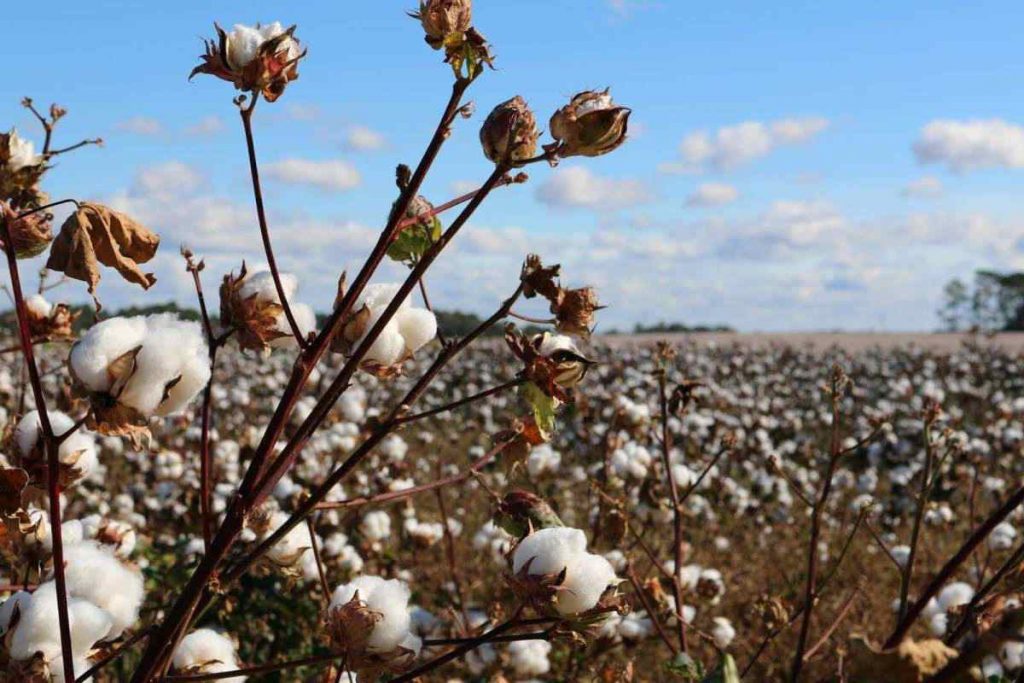
Organic cotton is one of the most natural fabrics out there.
It’s grown without pesticides and synthetic fertilizers and processed with no chemicals.
From an ecological standpoint, organic cotton farming uses 62% less energy and 88% less water than conventional cotton (which is, to the surprise of many, one of the single dirtiest crops around).
There are several certifications used with sustainable and ethical cotton to tell us that the cotton was a. grown without any chemicals or machine harvesting, and b. processed without any chemicals leaving the final garment chemical-free.
Other pertinent certifications ensure fair pay and safe conditions for farmers (though not being exposed to chemicals in the field is already a huge component in that regard).
Organic clothing brands use this fabric in just about every type of garment: organic bras, organic mattress protectors, organic maternity clothes, organic baby clothes and much more.
Certifications: USDA-Certified Organic, Global Organic Textile Standard (GOTS), Organic Content Standard (OCS), Better Cotton Standard, , Bluesign, and Oeko-Tex 100
Recycled cotton is produced using either post-industrial or post-consumer waste.
Many slow fashion brands use this and for good reason. This means that your favorite ethical cotton underwear or sustainable blue jeans could be made from industry fabric scrap or other recycled cotton garments.
Recycled cotton helps to prevent fashion waste from ending up in landfill.
However, certifications and regulation is difficult because it’s hard to know where the recycled cotton comes from.
It also becomes difficult to know whether recycled cotton is pure cotton (and could thus be composted) because a garment can be recycled into recycled cotton even if it bears some synthetic blend (so long as that blend is 4% or less).
Certifications & Standards: Global Recycle Standard (GRS), Recycled Content Standard (RCS), Oeko-Tex 100
In a previous article, we mentioned that hemp is one of the most eco-friendly natural fabrics around.
It’s high-yielding, its growth is healthy for the soil (thanks to a process called phytoremediation), and it requires much less water than cotton.
The main reason our hearts are racing for hemp clothing?
It’s considered a carbon negative raw material. It actually absorbs CO2 from the atmosphere.
Because it has so many benefits (like being naturally sun protective and antimicrobial) and is harder to grow, hemp tends to be slightly more expensive than other sustainable organic fabrics, though we can expect to see more of it in the future.
Certifications & Standards: USDA-Certified Organic, Global Organic Textile Standard (GOTS), Organic Content Standard (OCS), Oeko-Tex 100, and Bluesign
Linen is almost identical to hemp in terms of sustainability.
The fabrics are also both super light and breathable. The only difference? Linen is derived from the flax plant.
Its growth requires very little fertilizer, pesticide, and irrigation. However, unlike hemp, linen isn’t as high-yielding.
As you know, linen’s general popularity and reliability means it is a favorite fabric in everything from linen clothing to linen sheets.
Certifications & Standards: USDA-Certified Organic, Global Organic Textile Standard (GOTS), Organic Content Standard (OCS), Oeko-Tex 100, and Bluesign
When bamboo is harvested, it can be done without killing the plant itself. That means that bamboo can renew suuuuper quickly (it’s one of the fastest growing plants on the planet).
Like hemp, bamboo consumes more CO2 than some trees. It doesn’t require a lot of inputs and can survive on rainfall alone.
Organic bamboo can be turned into one of the one of the most sustainable fabrics — but that doesn’t mean it always is. Depending on how it’s processed, it could involve chemically intensive processes — and all the harmful impacts that come with it.
Mechanically processed bamboo is a better-for-Earth way to wear bamboo (but sadly it makes up just a tiny amount of what we find on the market).
Look for organic bamboo fabric in raw form as opposed to that which is plasticized into bamboo rayon/viscose (stay tuned for more on this later as it’s important to know the distinction, given most bamboo fabrics on the market are viscose/rayon).
Certifications & Standards: Forest Stewardship Council, USDA-Certified Organic, Global Organic Textile Standard (GOTS), Organic Content Standard (OCS), , Oeko-Tex 100, and Bluesign
Cork fabric has left the board and the bottle to make it onto our bodies.
The material has become a popular one for vegan bags and shoes… and for good reason!
Cork is sustainably harvested from a cork oak (yes, it’s from a tree) by simply shaving away the bark. In fact, Quercus suber can be harvested—and should be harvested—to extend its life.
While the tree is regrowing the bark, it consumes more carbon dioxide than most types of trees. Thus cork plantations can actually act as a carbon sink.
Once it’s been harvested (which can sustainably happen to mature trees every 9 to 12 years), the cork can be laid out in the sun to dry, and then just requires water to transform it into something suitable for fashion.
Before we put a cork in it, we’ll leave you with this: cork is a valuable member of a unique ecosystem. It supports a range of plant and animal species and our use of cork is an essential component of keeping that ecosystem thriving.
Sounds like a few reasons to pop some corks in celebration!
To cover our recycled material basics (of the big synthetic fabric culprits), Econyl is simply recycled nylon.
Well, it uses synthetic waste from ocean plastic, abandoned fishing nets, waste fabric and forms them into new nylon fabric.
While it feels exactly the same as nylon, this fabric is made using a closed-loop system, and doesn’t require as much water.
While we’re excited about this fabric and all the possibilities for eco friendly swimwear it’s opened up, it has still been associated with some of those annoying microplastics that end up in our waterways.
Certifications & Standards: Global Recycle Standard, Recycled Content Standard (RCS), and Oeko-Tex 100

While we’re at it, we should also talk about recycled polyester, or rPET.
Single-use plastics are obviously wreaking havoc on our environment, and many brands have worked out ways to give landfill-bound plastic bags, bottles, and textiles a second life.
Recycled polyester (like its virgin counterpart) is super versatile and can take the form of many different feels and functions. Recycled polyester can be used to make everything from thin and light stretchy ethical activewear to thick and fluffy sustainable fleece.
Sustainable fashion brands like Patagonia, prAna, and Reformation have been using them for years.
While this does prevent plastic from ending up in landfills (or oceans), even rPET will lead to the release of microplastics upon washing without the use of a microplastic filter bag (like the Guppyfriend).
Plus, PET can only be recycled so much before it degrades in quality to the point of needing to be discarded. There are also concerns about some of the toxic substances in PET bottles and the effects upon the wearer.
Recycled polyester is definitely better than virgin polyester.
Certifications & Standards: Global Recycle Standard, Recycled Content Standard (RCS), and Oeko-Tex 100
Lyocell (sometimes just known as TENCEL™, the trademark name of the fabric given to it by Austrian manufacturer Lenzing, the world’s most reputable lyocell and modal producer) is a semi-synthetic, or cellulosic, fabric that has become very popular in the sustainable fashion world.
It’s produced from the pulp of eucalyptus trees, which don’t require a lot of water and pesticides. In the case of the TENCEL™ brand, only sustainably managed forests are used.
The manufacturing of lyocell is also sustainable, because it requires less water than other fabrics, and occurs in a “closed loop system” where up to 99.5% of dissolving agents can be reused.
But as we’ve said before, not all lyocell is the same.
We recommend looking specifically for Tencel clothing brands, that is brands who only use TENCEL™ lyocell, or are very transparent about their sourcing and manufacturing practices.
Certifications & Standards: Oeko-Tex 100, Forest Stewardship Council
Modal is another semi-synthetic fabric that’s known for its top-notch comfort and breathability.
Just as lyocell is made of the pulp of eucalyptus, modal is made from beech trees.
While it uses similar production processes of unsustainable viscose rayon fabric, it does so with far less waste and chemicals involved using the same closed-loop production process of recycling water and solvents that’s also used for lyocell.
When it comes to brand name TENCEL™ modal, up to 99% of the solvent is reused.
Theirs is also carbon-neutral and made only from wood harvested from certified sources – all reasons to prioritize brands that stick to Lenzing’s TENCEL™ modal.
Certifications & Standards: Oeko-Tex 100, Forest Stewardship Council
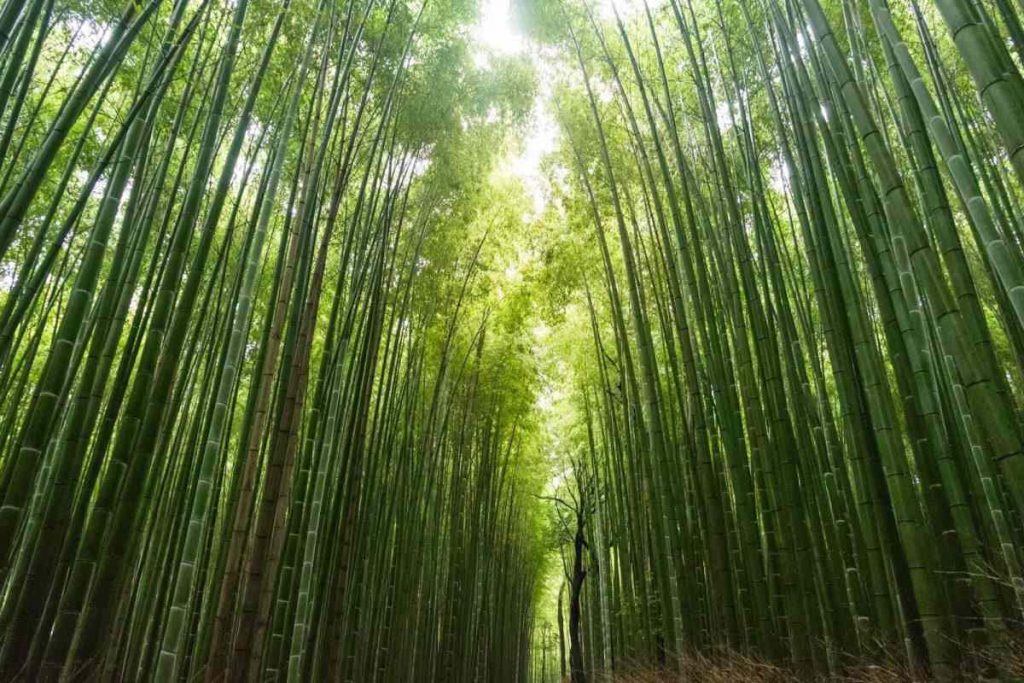
Bamboo’s popularity is soaring these days, and as a result you can find it in everything from ethical lingerie to eco friendly sunglasses.
Bamboo lyocell, like regular or TENCEL™ lyocell, is also made in a closed-loop process that reuses chemicals and water.
However, as we briefly mentioned before, bamboo can also be very unsustainable and it’s easy to mistake closed-loop bamboo lyocell with bamboo viscose.
Both of these require a whole host of chemicals to plasticize the pulp into silky fibers. So look out for closed-loop bamboo lyocell, that is also processed with minimal toxic chemicals.
A few brans making bamboo pajamas and bamboo socks, and the supplier Monocel for example, have started creating their own sustainable bamboo lyocell metrics.
Either way, it’s important to do a double take at transparency and other types of third-party certifications.
Certifications & Standards: Oeko-Tex 100, Worldwide Responsible Accredited Production (WRAP), Forest Stewardship Council

Lenzing™, the brand responsible for most of the world’s lyocell and modal has recently released a new type of viscose fiber — Ecovero.
Responsible for 50% less emissions and water use than generic viscose, these fibers come from varied sustainable wood and pulp sources and meet the highest environmental standards.
Lenzing™, and their products, raise the bar high when it comes to sustainability.
If you see their name associated with a brand, you can be rest assured it was made using closed-loop processes and that you’re choosing some of the most sustainable textiles on the planet.
Certifications & Standards: Global Recycle Standard, Recycled Content Standard (RCS), and Oeko-Tex 100, FSC Certified and PEFC Certified

As you may suspect from the name (and picture above!), Piñatex comes from pineapples and has entered the sustainable fashion world as a sustainable and cruelty-free replacement for leather.
It’s essentially a food byproduct, made from scrap pineapple leaves that are otherwise burned. It reduces waste and can biodegrade naturally even when frequently combined with wood-based PLA.
Just note some Pinatex brands also cover it in non-biodegradable resins which sort of defeats the point.
All in all though, tons of potential, so look out for this one!
Certifications & Standards: Oeko-Tex 100
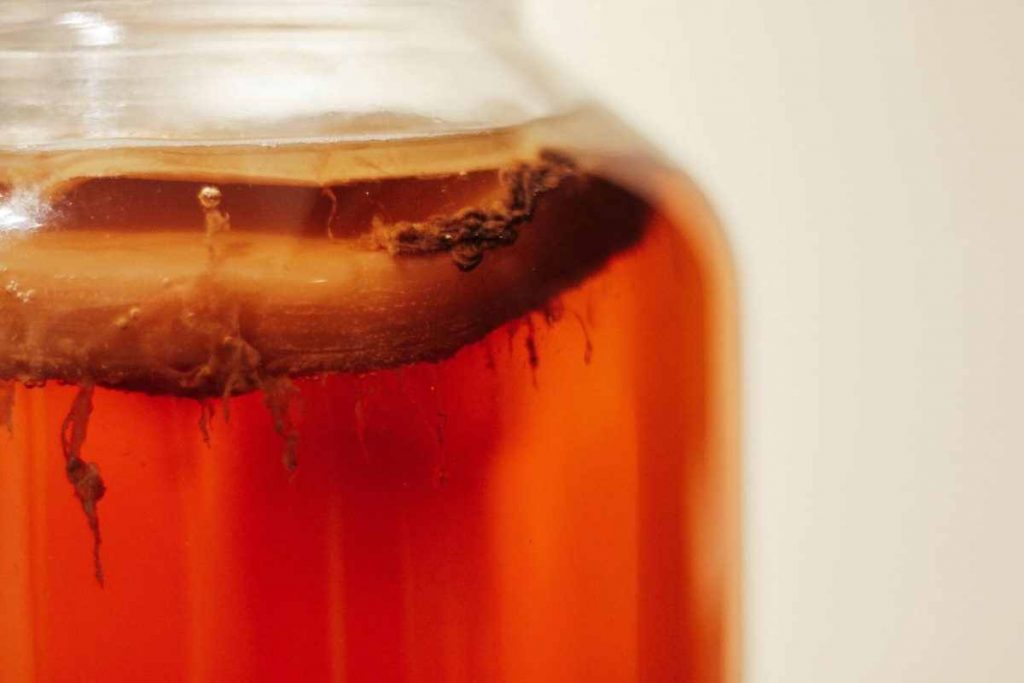
Kombucha drinkers, rejoice!
Those otherworldly floaties at the bottom of your ‘buch bottle’ might be the leather of the future.
If you don’t drink kombucha, here’s the gist: Kombucha is fermented using a material of live cultures called SCOBY (Symbiotic Culture of Bacteria and Yeast), and that same mushy gob of bacteria can be turned into leather.
Laid on a mold, the SCOBY leather dries, fast forward a few steps and you’re left with tea-based vegan shoes, wallets, and clothes.
We promise, it’s not as gross as it sounds.
SCOBY-based leather obviously doesn’t require animals, is biodegradable, requires zero heavy metals and other tanning chemicals, and is significantly cheaper than genuine leather, too.
That cup of coffee can go a little further with S.Cafe.
The process involves using ground coffee beans and turning them into yarn. The finished product dries quickly and provides natural UV protection.
You may smell like a latte all day 🙂 (though we wouldn’t complain about that either), but you’ll be dry, comfy, and eco-friendly while doing so!
If you wear something made with Qmonos, you’ll feel like you’re in a sci-fi movie.
That’s because this Japanese fabric is made from a synthetic spider silk, produced using microbes and spider silk genes.
The fiber is tougher than steel, yet still lightweight and comfy. It’s completely biodegradable and, as they say in the movies, zero spiders were harmed in the making of this fabric.
From Japan’s Spiber Inc., the very same company that brings us Qmonos, comes the newest eco friendly fabric on the block: Brewed Protein.
Something like a combination of SCOBY and QMILK, Brewed Protein is a silky protein fiber resulting from fermenting plant-derived biomass.
Its versatility is one of it’s sustainable strong suits, as it can be processed into fine silk-like strands, cashmere-like yarns, or hardened into a resin similar to that of a tortoise shell.
Aside from the wide applications, it’s fully biodegradable (without breaking down into microplastics), vegan, and produces far less greenhouse gases than comparable animal-derived protein fibers.
Since it’s so new, you likely won’t find it in too many places, though Spiber recently collaborated with The North Face to create The Moon Parka, the first outdoor jacket created of Brewed Protein.
Another vegan leather option, Apple Eco Leather (or Pellemela, as it was originally known in Italian) is made from a waste of the apple juice industry.
It’s made by the Italian company Frutmat (by which it’s also called, in a sort of Kleenex/tissue situation), which specializes in recycling biological waste.
On its own, it’s fully biodegradable, as well as waterproof, breathable, and super durable.
That’s why you’ll pretty much only find it in purses, wallets, eco friendly handbags, ethical sneakers and sustainable running shoes.
Certifications: Oeko-Tex 100
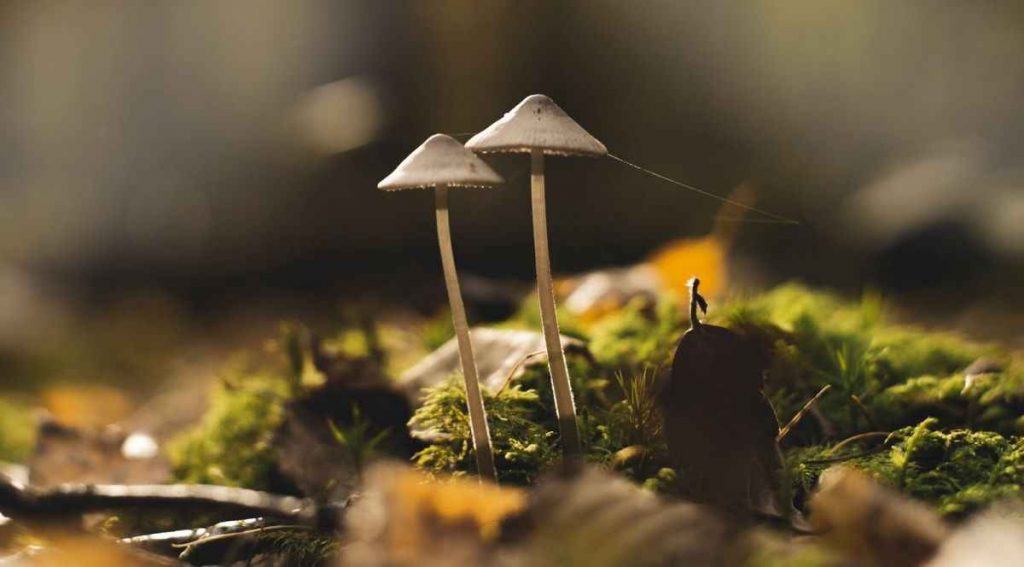
Alternative plant-based wools have taken the world by storm, including this one — made from hemp, coconut fibers, and mushroom enzymes.
This vegan wool is not only animal-friendly, but is also sustainable!
Mushrooms have made it into a lot of sustainable vegan fabrics recently, so stay tuned for more fungi fashion…coming soon.
Cupro (also known as cupra) is a type of vegan silk alternative made with either recycled cotton garments, or cotton linter, a waste byproduct of cotton farming.
Linter is the short fuzz that sticks to seeds after harvesting.
Similar to lyocell and modal, the natural cotton fibers are subjected to chemicals which turn it into a semi-synthetic fabric. Of course, it’s done through a closed-loop process that recycles nearly all the water.
While this is both a recycled and semi-natural fabric (and thus far more sustainable than any non-recycled synthetic), it is one of the least sustainable on this list.
For some, the main purpose of cupro fabric is just to make money from accumulated waste in countries like China (greenwashing alert!).
Additionally, the fabric has been associated with a lot of pollution in its production phase.
If you’re really wanting to wear recycled fabrics, choose recycled polyester instead unless a brand is really transparent about their cupro sourcing.
Certifications & Standards: Global Recycle Standard, Recycled Content Standard (RCS), Life Cycle Assessment (LCA), ISO 14001, and Oeko-Tex 100
QMilk has been self-proclaimed to be the “material of the future.” And maybe it is! It sure sounds pretty futuristic.
The material uses casein, a milk protein sourced as a byproduct of the dairy industry, to make a fabric that’s natural, compostable, flame retardant, and silky smooth.
Note though that QMilk is not vegan.
A quick note on the materials in this section.
They are mostly vegetarian (with the exception of leather) but not vegan. We understand that many reading this would opt for the fabrics above – power to you!
However, we also recognise the complexity and impact of these materials on communities around the world. Many rural and artisanal communities rely on the income they receive from materials on the list below.
For us, it feels important to continue to support these communities as long as we can get adequate comfort around the treatment of the animals in their care.
This article about sourcing cashmere and Yak Wool from Tibet is a good perspective if you’d like to read a little more about this.
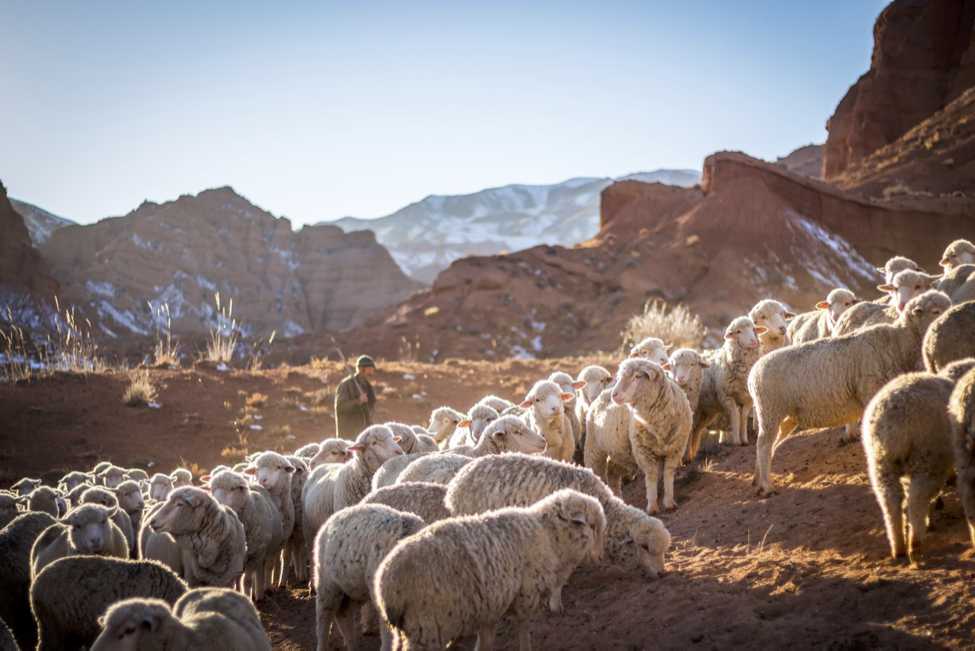
As a natural fiber, wool can be considered an alternative to plastic / petroleum-based synthetics like nylon and polyester. I
t’s long lasting and typically doesn’t require a lot of chemicals during the processing stage.
Plus, wool fabrics can biodegrade naturally.
However, most animal agriculture has been associated with environmental degradation and land clearing—and this includes operations that raise sheep for wool. Not only that, but the production of wool has been associated with a range of animal welfare and ethical concerns.
Because we’re animal lovers, we needed to understand this issue as best we could.
Read our article: “What is Ethical Wool?” for the deep dive.
While some believe wool can never be ethical, we believe it can be, but it’s a really high bar. Always always always look for relevant certifications at the bare minimum.
Certifications & Standards: Responsible Wool Standard (RWS), Certified Organic Wool, Certified Animal Welfare Approved, Certified Humane® Label, Soil Association Organic Standards and Climate Beneficial by Fibershed
Merino sheep are different from other types of sheep in that they have wrinkly skin, which means more wool.
A lot of the world’s merino wool comes from Australia, and many operations use a gruesome procedure called “mulesing.”
Ethical merino does exist, especially if it’s sourced from New Zealand where animal welfare standards are extremely high and mulesing is not practiced. Don’t be sheepish about asking brands the hard questions around transparent sourcing practices.
Certifications & Standards: ZQ Merino Standard, Responsible Wool Standard (RWS), Woolmark, and Climate Beneficial by Fibershed
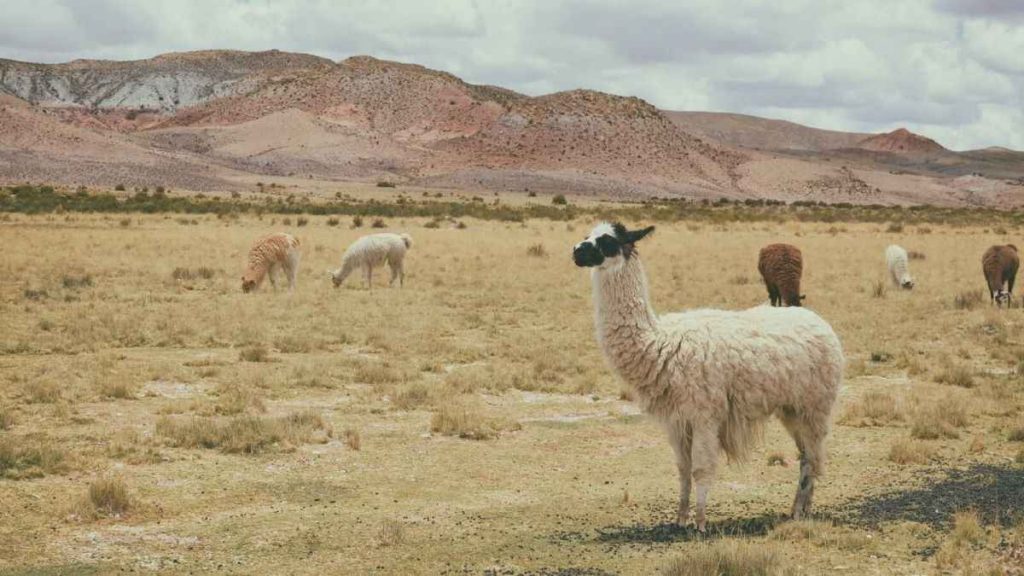
Alpaca is considered to be one of the most ethical and eco-friendly wools.
Alpacas are related to camels and most of the world’s alpaca population is still raised in their native habitat (in Peru, generally).
Alpacas don’t destroy their environment in the way that other livestock does, and they’re more efficient eaters, too. Local Peruvian farmers generally respect these animals and raise them more humanely.
In return, alpacas support local economies.
Certifications & Standards: Global Organic Textile Standard (GOTS), Fair Trade, Responsible Wool Standard (RWS), Woolmark, and Climate Beneficial by Fibershed
Cashmere is one of the world’s favorite fabrics for super soft and cozy eco friendly sweaters, as well as a fully biodegradable one.
Its fibers can be as fine as 15 microns in size (compared to 100 microns of human hair). It’s sourced from goats raised in the mountainous regions of Asian countries like Mongolia.
Unfortunately it’s a fabric that’s been associated with a lot of environmental and ethical implications.
Namely, surrounding the working conditions of goat herders and ecological complications from the goat farming itself.
Fortunately, cashmere can be sourced sustainably, but it’s important to read the details. Look for those that use hand combing techniques, as it preserves the fibers and doesn’t risk cutting or scaring the animals as electric shears do.
Some brands have even stopped using virgin cashmere fibers and only make recycled cashmere apparel, which would be our preference for any cashmere clothing.
Certifications & Standards: Recycled Claim Standard (RCS); The Global Recycled Standard (GRS), Re.VerSo, Good Cashmere Standard ® (GCS), Sustainable Fibre Alliance (SFA) Cashmere Standard, Kering Standard on Cashmere, Global Organic Textile Standard (GOTS), Fair Trade, Responsible Wool Standard (RWS), Certified Organic Wool, Certified Animal Welfare Approved, Certified Humane® Label, Oeko-Tex 100, and Climate Beneficial by Fibershed
Camel wool is considered to be one of the most sustainable types of animal fibers. Where animal welfare is a concern with other types of wool, there have been less reported cases with camels.
The type of camel used, the Bactrian camel, sheds naturally.
This means that the potential for harm or pain for the camel is reduced. These camels are typically raised by small-scale, family farmers, which also contributes to less environmental damage.
Camel wool is totally biodegradable and doesn’t require dyes or chemicals during processing. Unfortunately, it’s pretty rare to find even today’s most sustainable fashion lines.
Certifications & Standards: Global Organic Textile Standard (GOTS), Oeko-Tex 100, Woolmark
Yak wool is a cashmere alternative and it’s also incredibly soft and warm.
It’s harvested from either the outer-coat (which yields a coarser fiber) or the undercoat (which yields a softer fiber) of Yaks raised free range on the Tibetan Plateau.
Yaks shed profusely year round, and thus harvesting the fur doesn’t actually directly involve the animal in any way, and it makes use of something that would otherwise just biodegrade in nature.
It also provides extra money to the nomadic herders that look after these herds.
Brands like United by Blue and Reformation (which both appear on many of our sustainable fashion brand guides) have started using ethical yak wool.
Certifications & Standards: Fair Trade, Oeko-Tex 100, Responsible Wool Standard (RWS)
Leather is an animal-based fiber.
It generally uses the skin of animals raised for meat (sustainably re-purposing a byproduct) but has also been criticized for both environmental and ethical reasons.
For starters, leather comes either from killing 1 billion animals per year for its own sake or from the meat industry as a byproduct (which is better, but still not great since the meat industry is one of the largest contributors to greenhouse gas emissions and heart breaking unethical treatment of animals).
Second, the process of tanning leather requires around 250 chemicals like arsenic and cyanide, which is equally bad for the earth as the tannery workers.
Plus it can’t biodegrade!
Only a few eco friendly options exist.
Ideally, the leather will be upcycled so you’re just making the best of an unsustainable material that’s already done its damage. This is really the only legitimate ethical leather out there.
If you’re choosing virgin leather, make sure it’s a byproduct; no animal should die for the sake of a coat or a pair of non ethical boots, no matter how sustainable the garment.
As for processing, Chrome free tanning is better than traditional tanning, but it’s still a far cry from being sustainable. Instead, look for brands that specify the use of all natural dyes or vegetable tanning.
Still, even vegetable tanned leather isnt perfect because it takes a long time to biodegrade (despite the fact that it’s technically a natural fiber).
Certifications & Standards: Ecolife™ by Green Hides, Oeko-Tex 100, and Bluesign, and the Leather Working Group
Down and feather apparel and bedding are in high demand, but also receive a lot of scrutiny due to animal welfare concerns.
Down does come from ducks or geese, after all.
From a sustainability standpoint, however, down makes use of otherwise wasted byproducts of the global food industry.
As unpalatable as it is, billions of ducks and millions of geese are raised for meat, and down is a good way to use the feathers that would otherwise go to waste.
However, animal agriculture, specifically that which involves ducks and gees, has been associated with inhumane practices so we always want to look for certifications that confirm no foul play is involved and that no animals are harmed purely for the purpose of harvesting their feathers.
Patagonia is a brand that has put out a very clear statement about their use of down and how they ensure traceability from farm to factory.
Certifications & Standards: Responsible Down Standard (RDS); Global Traceable Down Standard
Silk — so soft the material name is used as an adjective.
As you can imagine, silk is great for the skin (thanks to antibacterial properties) and great for the planet (thanks to it’s complete compostability).
It’s produced by either ‘wild silkworms,’ or, in most cases, domesticated silkworms.
The production of silk, in theory, shouldn’t harm the worms, but in some cases they end up dying when the silk is processed.
Sericulture (aka the silk industry) has also been associated with slave labor. This video breaks down some of their labor concerns with silk.
Some brands are experimenting with silk made of yeast, sugar, and water. Until then, if you’re looking for sustainable silk, peace silk is the way to go.
Peace Silk uses a humane type of sericulture and verifies its production under the World Fair Trade Organization Guarantee system.
Also known as ‘Ahisma Silk’ the nonviolent production process allows the silkworm to live a natural and humane life and eventually evolve into a butterfly.
The silkworms are bred under natural conditions (with no fungicides, sprays, or insecticides). They’re able to emerge on their own and carry on with their lives after the silk is collected.
That’s right — no animals were harmed in this type of silk fabric production.
Certifications & Standards: Global Organic Textile Standard (GOTS), OTEX-Certified Organic Silk and World Fair Trade Organization Certified
Unsustainable fashion is in a large part the result of poor fabric choice.
Many materials that make it into our clothes harm humans or animals (oftentimes both). Not to mention, they release harmful chemicals and microplastics into our environment for hundreds of years.
By filling your wardrobes with many of the eco friendly fabrics here, you can make a stand for a better world by choosing sustainable and organic clothing.
Never before has there been such an exciting time for fashion!
Between natural fibers, sustainable synthetic fibers, and funky futuristic fibers, the best sustainable clothing brands are continuously experimenting with sustainable textiles—both new and old.
Spread the word and share this article to keep this momentum going!
ECO TREND TEKSTİL SANAYİ VE DIŞ TİCARET LTD.
Tekstilkent B-5/37 34235 Esenler – ISTANBUL / TURKIYE